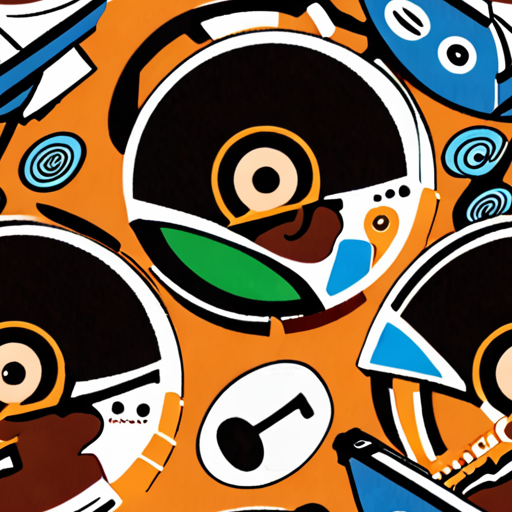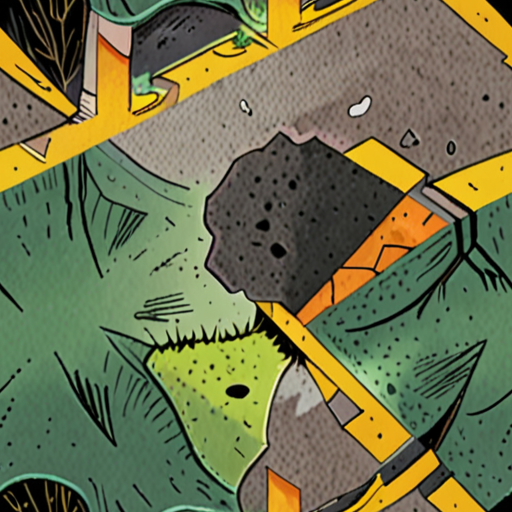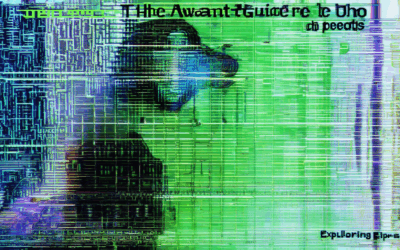From its inception in the vibrant streets of the Bronx to its evolution into a global phenomenon, hip hop music evolution tells a compelling story of cultural expression and artistic innovation. Over the decades, hip hop culture has transformed, raising questions like “how has hip hop music evolved?” and “who created the hip hop evolution?” Early pioneers such as DJ Kool Herc played a pivotal role in shaping the movement, sparking the genesis of a genre that has grown to encompass diverse influences and styles. This journey through hip hop history not only uncovers its roots in African American culture but also highlights the elements – MCing, DJing, breaking, and graffiti – that form its foundation. As we explore the hip hop music evolution timeline and unveil the global spread of hip hop, we delve into the key moments and artists that defined its path, offering insights into the ever-changing landscape of hip hop music and its enduring legacy.

Evolution of Hip Hop Music
Hip hop music has undergone significant transformations since its inception in the 1970s.
-
Early Days
The genre originated in the Bronx, New York, among African American and Latino youth who sought to express themselves through music, dance, and graffiti.
Breakdancing, MCing, DJing, and graffiti art formed the core components of hip hop culture.
-
Mainstream Breakthrough
In the mid-1980s, hip hop music began to gain mainstream recognition, thanks in part to the success of acts like Run-DMC and the Beastie Boys.
This exposure led to increased commercialization, with major record labels signing hip hop artists and releasing albums that appealed to a broader audience.
-
Diversification and Regional Styles
As hip hop continued to evolve, regional styles emerged, reflecting local tastes and experiences.
West Coast hip hop, characterized by G-Funk beats and lyrics often focused on gang life, gained popularity in the early 1990s.
Southern rap, marked by its drawling delivery and often humorous lyrics, also gained traction during this period.
-
New Wave of Artists
A new generation of artists, including N.W.A., Dr. Dre, and Snoop Dogg, pushed the boundaries of hip hop music and culture.
These artists drew upon their personal experiences, incorporating elements of gangsta rap, funk, and soul into their sound.
-
Abstract and Experimental Hip Hop
Abstract hip hop, a subgenre characterized by its emphasis on avant-garde production techniques and experimental sounds, has become increasingly popular in recent years.
Artists like MF DOOM, J Dilla, and Flying Lotus have helped shape this movement, which often incorporates elements of jazz, funk, and electronic music.
-
Modern Hip Hop
Today, hip hop music encompasses a vast array of styles and subgenres, from trap and mumble rap to conscious rap and old-school revivalism.
The genre continues to evolve, with artists pushing the boundaries of lyrical complexity, sonic experimentation, and visual storytelling.
Who Created Hip Hop Evolution?
Hip hop evolution is a term that refers to the continuous growth and development of hip hop culture, which originated in the 1970s in the Bronx, New York.
- The origins of hip hop can be attributed to DJ Kool Herc, who is often credited with inventing hip hop music by extending the breakbeats of funk records and creating a new style of rhythmic flow.
- Grandmaster Flash, another influential figure in hip hop history, developed the technique of backspinning records, allowing DJs to repeat and manipulate sections of songs.
- Afrika Bambaataa, a DJ and MC, played a significant role in popularizing hip hop culture through his Zulu Nation collective, which brought together DJs, MCs, and breakdancers from various neighborhoods in New York City.
These pioneers, along with others, laid the foundation for the evolution of hip hop, which has since branched out into various styles, genres, and subcultures.
Key Figures in Hip Hop Evolution
- DJ Kool Herc: Known for inventing hip hop music and developing the concept of breakbeat DJing.
- Grandmaster Flash: Developed the technique of backspinning records and was a pioneer of turntablism.
- Afrika Bambaataa: Popularized hip hop culture through his Zulu Nation collective and played a key role in bringing together DJs, MCs, and breakdancers from various neighborhoods in New York City.
- Russell Simmons: Co-founded Def Jam Records, one of the first major record labels to sign hip hop artists, and helped bring hip hop music to a wider audience.
Abstract Hip Hop’s Role in Hip Hop Evolution
As a platform dedicated to exploring the world of hip hop music, art, and culture, Abstract Hip Hop plays a vital role in documenting and celebrating the evolution of hip hop.
We strive to provide our readers with in-depth articles, artist interviews, and music reviews that showcase the diversity and creativity of hip hop culture.
By highlighting the contributions of pioneers like DJ Kool Herc, Grandmaster Flash, Afrika Bambaataa, and Russell Simmons, we aim to educate and inspire a new generation of hip hop fans and creators.

Origins of Rap Music
Rap music evolved from various genres, including the West African griot tradition, which involved storytelling through music and poetry. In the United States, rap drew inspiration from African-American vocal styles of blues and jazz, as well as the African-American insult game known as “playing the dozens,” which was later developed into battle rap and diss tracks. The 1960s saw the emergence of African-American poetry, which laid the groundwork for the lyrical complexity and social commentary found in modern rap music.
Early Influences
Some notable early influences on rap music include:
- The West African griot tradition, which emphasized oral storytelling and poetic expression.
- African-American vocal styles of blues and jazz, characterized by improvisation and emotional intensity.
- The African-American insult game “playing the dozens,” which involved rapid-fire insults and witty wordplay.
- African-American poetry of the 1960s, which explored themes of social justice and personal identity.
Key Developments
Several key developments contributed to the evolution of rap music, including:
- The rise of DJ Kool Herc, who popularized breakbeat DJing and MCing in the 1970s.
- The emergence of Grandmaster Flash and the Furious Five, who created socially conscious lyrics and innovative beats.
- The development of gangsta rap, which addressed issues of poverty, violence, and racism in urban communities.
- The growth of alternative and underground rap scenes, which pushed the boundaries of lyrical content and sonic experimentation.
Modern Rap Music
Today, rap music encompasses a diverse range of styles and sub-genres, from trap and drill to conscious rap and experimental hip-hop. Artists continue to draw inspiration from traditional forms of music and poetry, while pushing the boundaries of lyrical complexity and sonic innovation. As a result, rap music remains a vibrant and evolving art form, reflecting the experiences and perspectives of artists from around the world.
Evolution of Style Hip Hop
The style hip hop genre has undergone significant transformations since its inception in the 1970s.
-
Early Beginnings
In the early days, hip hop was heavily influenced by African American and Latino cultures in New York City, particularly in the Bronx.
DJs would play soul and funk music at community gatherings, which eventually led to the development of MCing, breaking, and DJing.
-
Pioneers of Style Hip Hop
Artists like Grandmaster Flash and the Furious Five, Afrika Bambaataa, and Kurtis Blow played a crucial role in shaping the sound and style of hip hop.
Their innovative use of turntables, sampling, and lyrical storytelling paved the way for future generations of artists.
-
Golden Age of Hip Hop
The late 1980s and early 1990s are often referred to as the Golden Age of hip hop.
This era saw the rise of influential groups like Public Enemy, Boogie Down Productions, and A Tribe Called Quest, who pushed the boundaries of lyrical complexity and sonic experimentation.
-
West Coast Hip Hop
The West Coast scene emerged in the late 1980s, led by artists like N.W.A., Dr. Dre, and Snoop Dogg.
Their G-Funk sound and gangsta rap lyrics captured the harsh realities of life in Los Angeles and beyond.
-
East Coast vs. West Coast Rivalry
The East Coast-West Coast rivalry dominated the mid-to-late 1990s, with artists like The Notorious B.I.G. and Tupac Shakur representing the two coasts.
This intense competition fueled creative innovation and helped shape the sound of hip hop in the 1990s.
-
Modern Style Hip Hop
Today, style hip hop encompasses a diverse range of sub-genres, from trap and mumble rap to conscious rap and indie hip hop.
Artists like Kendrick Lamar, J. Cole, and Chance the Rapper continue to push the boundaries of lyrical depth and sonic experimentation.
What Influenced Hiphop to Start?
Hiphop music culture emerged as a product of African American, AfroCaribbean and Latino inner-city communities plagued by poverty, the proliferation of drugs, and gang violence in the 1960s and early 1970s.
- The harsh realities of life in these communities led to the development of a unique sound and style that reflected the struggles and aspirations of its creators.
- Hiphop served as a means of self-expression and empowerment, allowing individuals to convey their thoughts, feelings, and experiences through music, dance, and visual art.
The early days of hiphop saw the rise of DJ Kool Herc, who is credited with inventing hip-hop music in the 1970s. He developed a technique called “backspinning” which allowed him to extend the breakbeats in funk and soul records, creating a continuous flow of music that could keep people dancing for hours.
Other pioneers of hiphop include Grandmaster Flash, Afrika Bambaataa, and Kurtis Blow, who helped shape the sound and style of the genre through their innovative use of turntables, sampling, and lyrical storytelling.
The impact of hiphop was further amplified by the emergence of MCs like The Sugarhill Gang, who popularized the genre with hits like “Rapper’s Delight.” This song brought hiphop to a wider audience, paving the way for future generations of artists to experiment and push the boundaries of the genre.
As hiphop continued to evolve, it incorporated various styles and influences, from jazz and funk to rock and electronic music. This diversity helped to establish hiphop as a global phenomenon, with artists from around the world contributing to its growth and development.
Today, hiphop remains a powerful force in popular culture, with its influence extending far beyond music to fashion, film, and social justice movements. Its legacy continues to inspire new generations of artists, who draw upon its rich history and creative spirit to forge their own paths and push the boundaries of what is possible.

The Four Elements of Hiphop
Hiphop is a dynamic and multifaceted art form that encompasses various creative expressions.
- MCing/Rapping
- DJing/Turntablism
- Breakdancing/B-Girling
- Graffiti Art
MCing, short for “rapping,” involves delivering lyrics over a beat, often with a strong emphasis on rhythm, rhyme, and storytelling.
Rappers use their words to convey emotions, tell stories, and express themselves, making it a powerful tool for self-expression and social commentary.
From Kendrick Lamar’s thought-provoking narratives to Cardi B’s confident boasts, MCing has evolved into a diverse and ever-changing art form.
DJing, or turntablism, involves manipulating sound recordings on a turntable, creating beats, scratching tracks, and mixing music live.
DJs have revolutionized the way we consume music, pushing the boundaries of creativity and innovation in the process.
From Grandmaster Flash’s pioneering work to modern-day virtuosos like Jazzy Jeff, DJing continues to shape the sound of hiphop.
Breakdancing, also known as b-boying or b-girling, is a physically demanding dance style characterized by intricate footwork, spins, and freezes.
Breakdancers have developed a unique language of movement, using dance to express themselves, tell stories, and showcase their skills.
From the early days of Rock Steady Crew to modern-day crews like the Dynamic Rockers, breakdancing remains an integral part of hiphop culture.
Graffiti art, also known as street art, involves creating visual representations of hiphop culture through murals, tags, and other forms of public expression.
Graffiti artists have transformed urban landscapes, turning drab walls into vibrant canvases that reflect the spirit of hiphop.
From Keith Haring’s iconic characters to modern-day masters like Banksy, graffiti art continues to push the boundaries of creativity and self-expression.
Conclusion:
The four elements of hiphop – MCing, DJing, breakdancing, and graffiti art – have come together to create a rich and diverse cultural landscape.
Each element has its own unique history, style, and significance, yet they all share a common thread: the desire to express oneself, tell stories, and connect with others.
As hiphop continues to evolve, these four elements remain at the heart of the culture, inspiring new generations of artists, dancers, musicians, and writers to push the boundaries of what is possible.




0 Comments